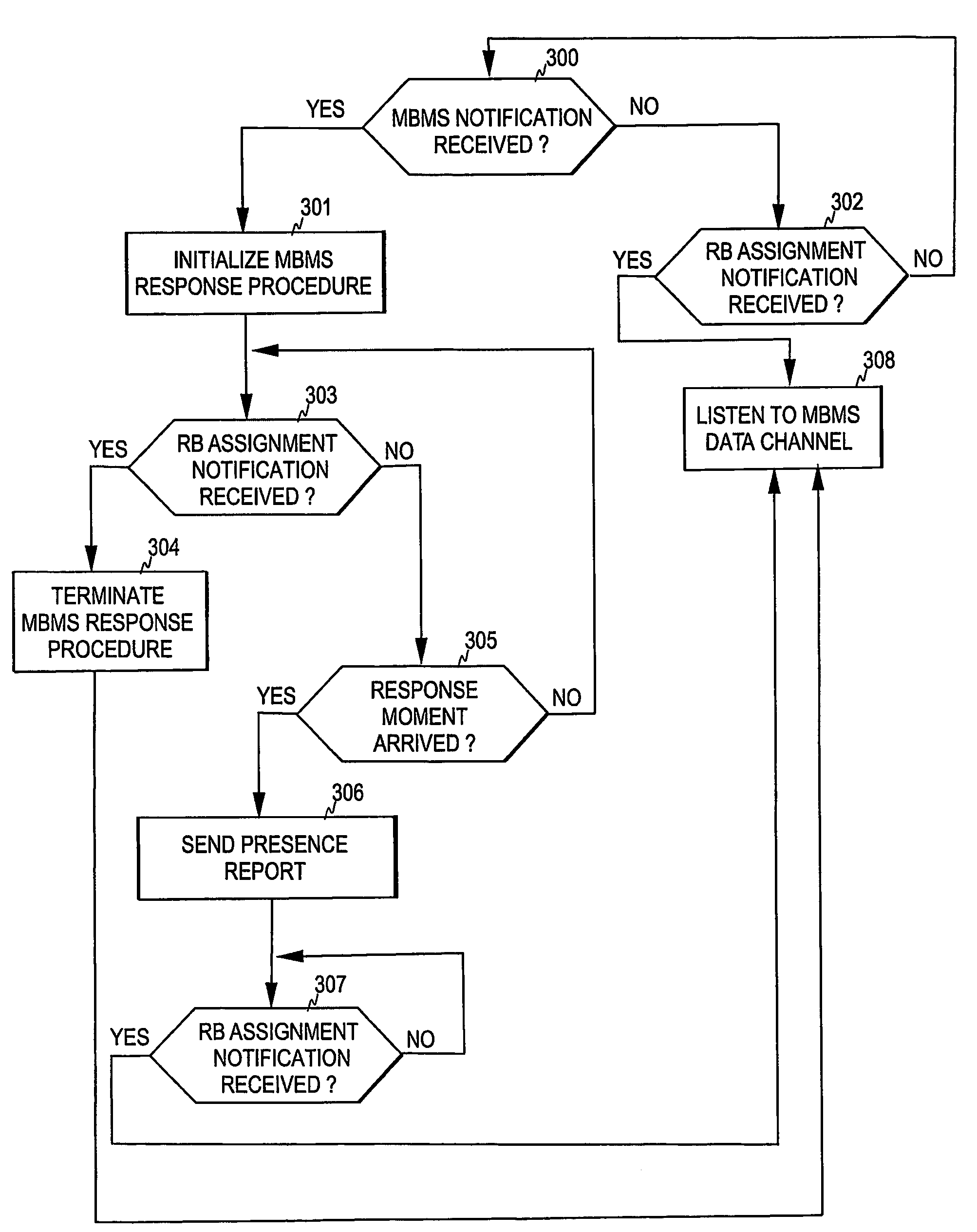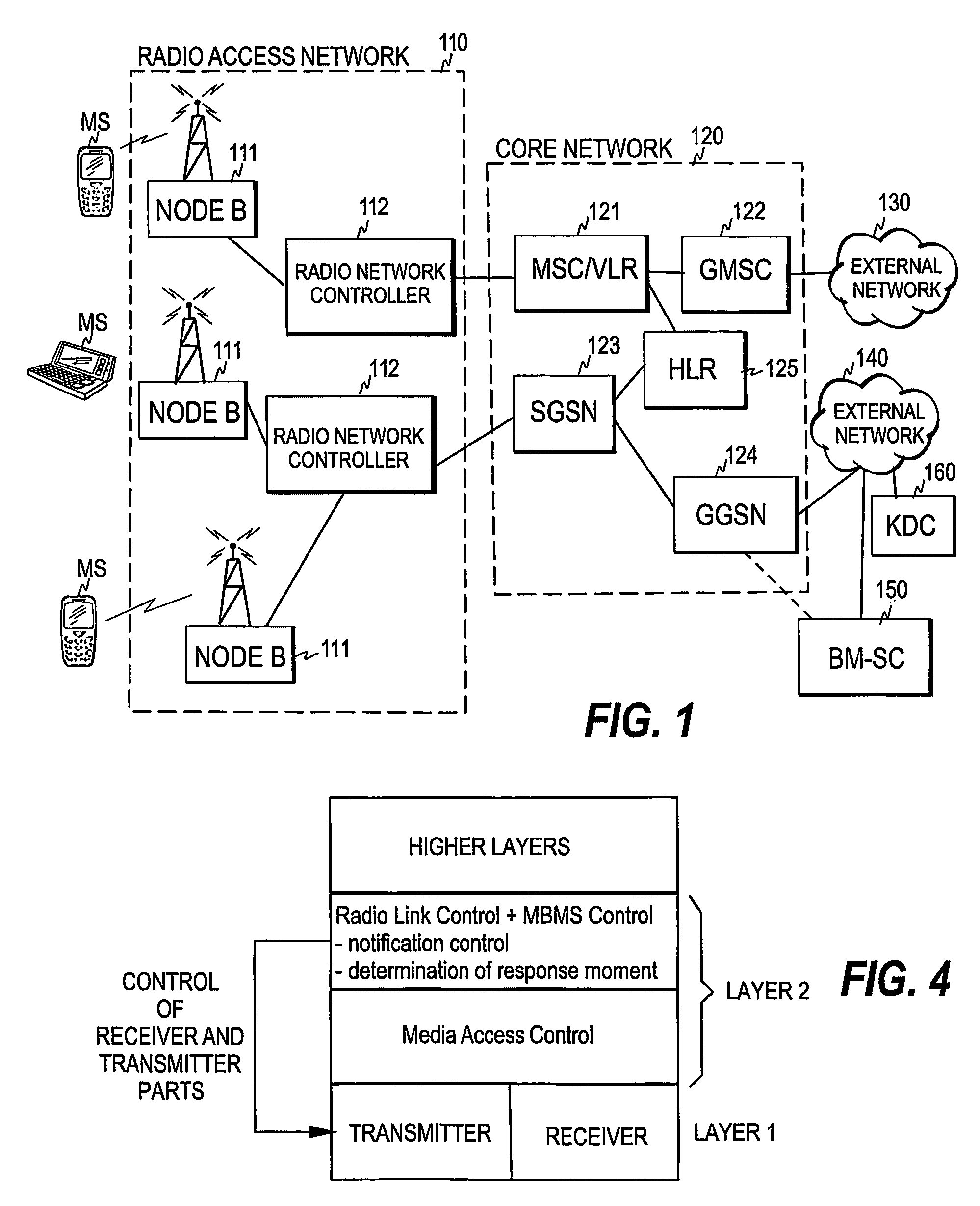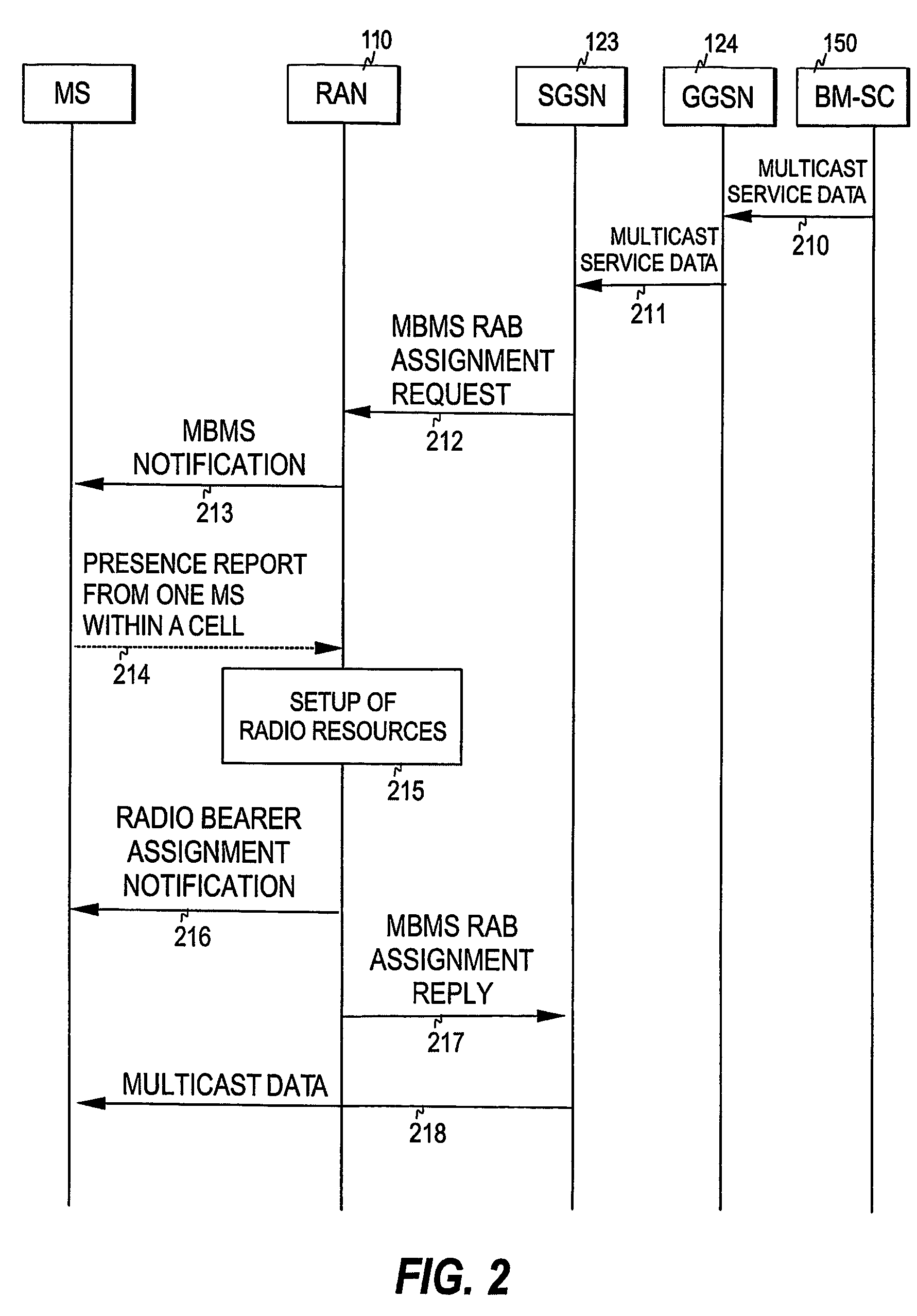Multicast transmission in a cellular network
a multicast transmission and cellular network technology, applied in the field of multicast service in a telecommunications system, can solve the problems of waste of network resources, congestion on the uplink signaling channel, and current cell of a mobile station that has not joined a multicast group, so as to avoid congestion and avoid resource allocation.
- Summary
- Abstract
- Description
- Claims
- Application Information
AI Technical Summary
Benefits of technology
Problems solved by technology
Method used
Image
Examples
Embodiment Construction
[0033]Below, the invention and its preferred embodiments are described using the terms and concepts commonly used in association with a UMTS environment. However, it is to be noted that the present invention is not tied to a particular technology, such as UMTS, but can be applied to any radio access network where multicast services are provided.
[0034]FIG. 1 illustrates a general UMTS (Universal Mobile Telecommunication System) architecture to which the present invention can be applied. As is commonly known, a UMTS network consists of three interacting domains: User Equipment (UE), Radio Access Network (RAN), and a Core Network (CN). In the figure, the Core Network is denoted by reference numeral 120, the Radio Access Network (such as UTRAN, Universal Mobile Telecommunication System Terrestial Radio Access Network) by reference numeral 110, and the User Equipment is shown as a plurality of mobile stations MS. In this context, the term “mobile station” refers to any terminal device (m...
PUM
 Login to View More
Login to View More Abstract
Description
Claims
Application Information
 Login to View More
Login to View More - R&D
- Intellectual Property
- Life Sciences
- Materials
- Tech Scout
- Unparalleled Data Quality
- Higher Quality Content
- 60% Fewer Hallucinations
Browse by: Latest US Patents, China's latest patents, Technical Efficacy Thesaurus, Application Domain, Technology Topic, Popular Technical Reports.
© 2025 PatSnap. All rights reserved.Legal|Privacy policy|Modern Slavery Act Transparency Statement|Sitemap|About US| Contact US: help@patsnap.com



